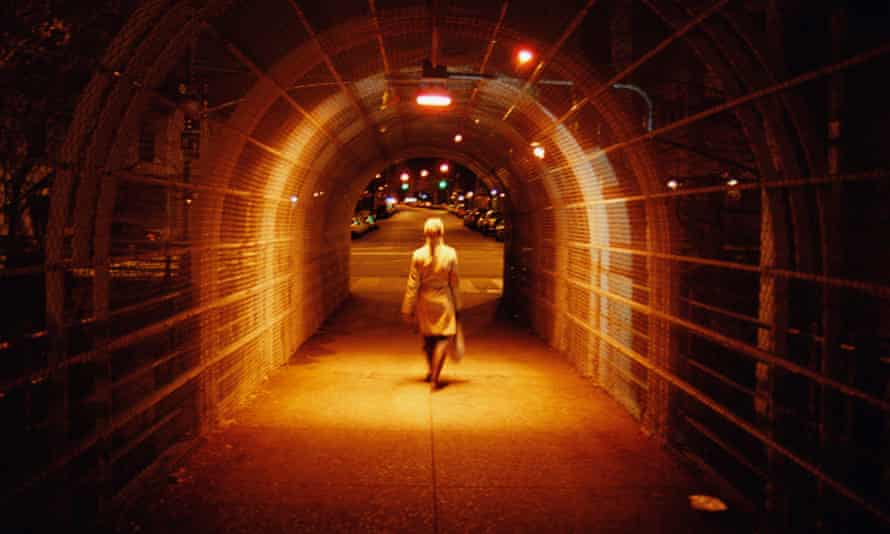Anti-stalking orders ‘fail to protect women from danger’

Slow uptake by police sees just 456 issued in first year, says Home Office report.
New powers to shield stalking victims from dangerous perpetrators were “mis-sold” by the government and are failing to provide rapid protection, according to a damning report sent to the Home Office.
Stalking Protection Orders were introduced in 2020 and allow police to intervene in stalking cases before a conviction, to prevent obsessive behaviours from escalating.
But the process of obtaining the Asbo-style orders is “very slow” and “bureaucratic”, according to the early findings of research cited in an official government review.
In one case identified by the Suzy Lamplugh Trust, a woman who feared being murdered by her stalker said it took nine months from the date she requested a Stalking Protection Order for it to be put in place. In that time, she received death threats and suffered a breakdown.
The research, conducted by Cheshire Police across five police force regions, comes as official data reveals a disparity in use of the orders around the country, with seven force areas failing to apply for any in the year after they were introduced.
In all, court data shows 456 stalking protection orders were issued in England and Wales between January 2020 and January 2021. About 80,000 stalking offences were reported nationally in the same period, according to the Office for National Statistics.
While Greater London police applied for 133 orders, and officers in Sussex applied for 41, 60% of the forces in England and Wales – 26 out of 43 – made five or fewer applications each during that period.
Among forces that did not apply for any were Thames Valley, where stalking offences surged in that period; and Durham, which saw a spike in stalking incidents, with 1,747 reports in 2020 compared with 818 the previous year.
Durham and Thames Valley both said they took stalking “extremely seriously” and employed a “wide range of tactics” to tackle it, including SPOs. Thames Valley said it had recently increased its use of the orders, with five orders obtained in January 2022 and “further applications being progressed”.
Gwent, Humberside, Suffolk, Warwickshire and South Wales also failed to apply for a single SPO in the first 12 months, though the forces say they have since submitted several applications.
The Home Office said it was closely monitoring the use of SPOs and would “look with interest” at the final research from Cheshire police – to be published later this year – but warned that some of the findings were inconsistent with its own research. It said safeguarding minister Rachel Maclean had written to chief constables where uptake was low urging them to improve use of the orders. “We expect all police forces to make full use of them,” a spokesperson said.Advertisement
Rachel Horman-Brown, a solicitor and chair of Paladin, the National Stalking Advocacy Service, said the failure to use the orders “typifies the way police deal with violence against women and girls”.
“These orders are as rare as hens’ teeth. They’re just not being obtained. And in addition to that, police continue not to charge stalking,” she said.
Because the orders are not widely used, many victims are resorting to applying for costly injunctions instead, she said. “They can end up in a worse position because then they’re also seen as personally taking the perpetrator to court. It increases the risk.”

Violet Alvarez, policy officer at the Suzy Lamplugh Trust, which operates the national stalking helpline, said SPOs had the potential to be “brilliant” but that many officers had never heard of them. “It’s one thing putting legislation in place, but if nobody’s using it properly, it becomes irrelevant,” she said. “The understanding of the level of risk in these cases is really misunderstood.”
Reports of stalking have risen in the past decade and surged during the pandemic. The percentage of cases being charged has fallen from 23% in the year ending March 2016 to 11% in the year ending March 2020. About 80% of stalking victims are women.
Stalking protection orders allow police to intervene as soon as stalking behaviours have been identified, while further investigation is conducted.
As well as imposing restrictions such as barring contact or preventing a perpetrator from entering a certain area, they can also include positive conditions, such as seeking mental health treatment or enrolling on a drug and alcohol programme. Breaching one is a criminal offence.Advertisement
The Home Office review, published last month, highlighted areas of good practice and found “several positives” in how the orders were working, such as the fact that 15 are granted for each one refused.
As well as court delays and lack of uptake, it identified concerns around monitoring of SPOs due to a lack of staff and resources. In January, Leon McCaskre, 41, stabbed his ex-partner Yasmin Chkaifi, 43, to death in Maida Vale, west London, while subject to a stalking protection order.
Katy Bourne, the conservative police and crime commissioner for Sussex, one of the areas that has used SPOs most, said the orders could bring “real benefit” for victims when used effectively. “The biggest message it sends out is that they’re being listened to, and they’re being believed,” she said.
She said there was “no excuse” for forces failing to use them. “Priorities are set by police and crime commissioners and if they don’t see this as a priority, there is no onus on officers to do it,” she said. “It’s a very big worry that some forces haven’t been using them. They’re letting victims down.”
Found this interesting? Then check our main news page where you can find all articles related to Crypto, Crime, Darknet, Security and much more!




















